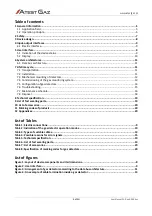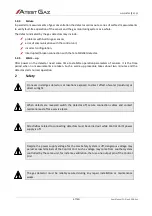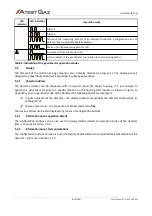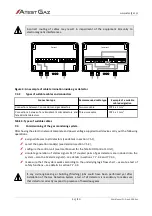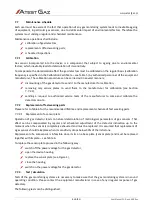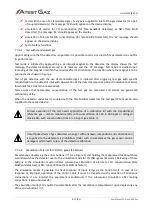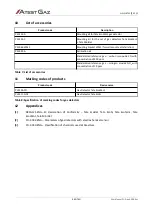
www.atestgaz.pl
1
General information
1.1
Application field
Gas detectors Teta EcoWent and Teta EcoN are designed as crucial components of the Teta Gas system for
monitoring of hazardous gas concentrations and are dedicated to detect excessive (hazardous)
concentrations of carbon oxide and nitrogen dioxide in public access facilities, in particular in underground
garages and car parks.
Teta EcoWent and Teta EcoN gas detector are not designed for operation in areas with
potentially explosive atmospheres.
Key features of gas detectors:
Power supply and data transmission via a single two-core cable.
Safe installation with low power supply voltage of any polarization.
Easy assembling and networking.
Possibility to couple with the Teta MiniDet gas detector and to set up a pair of collaborating
devices for combined detection of CO and LPG concentrations.
Simple and clear procedure to assign and verify addresses of individual detectors within a gas
monitoring network.
Possibility to verify status of individual detectors by means of the supervising control unit.
Optional calibration of the detector parameters by replacement of the detector PCB (electronics
board) – very short time of calibration.
Three alarm thresholds.
Indication of detector faults.
1.2
Operation principle
Gas detectors are crucial components of any system for gas detection. They are designed for periodical
measurements of gas concentration in ambient air. Information that the settings for concentration
thresholds are exceeded is shown by means of dedicated light indicators (LEDs) provided on the side wall of
the detector housing (see Figure 1) and transmitted via a digital output line.
Presence of hazardous gases is detected by means of electrochemical sensors. Such a solution enables high
insensitivity to variations of ambient conditions, such as temperature, humidity or pressure. The sensor also
distinguishes with high immunity to presence of disturbing chemical compounds (e.g. methane, isobutene
or carbon dioxide), which eliminates occurrence of faked alarms.
The sensor applied in our detectors demonstrates slight sensitivity to hydrogen and fumes vapours of
ethanol, but for typical applications such gases occur only sporadically and in small amounts. Please refer to
Appendix [2] for more details about electrochemical sensors.
Teta EcoWent detectors can directly collaborate with Teta MiniDet devices (by direct coupling by means of
X2 terminal) and make up a paired unit that enables simultaneous detection of carbon monoxide (CO) and
LPG (C
3
H
8
and C
4
H
10
1
Sensors are calibrated with the use of gaseous propane C
3
H
8
.
s. 5|20
User Manual: POD-046-ENG R01




